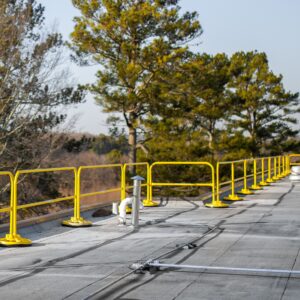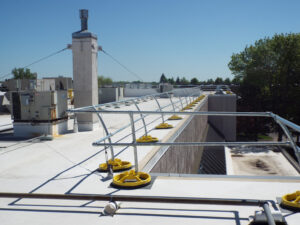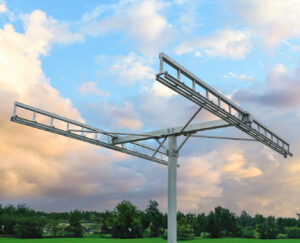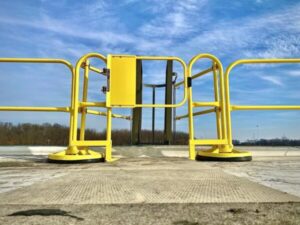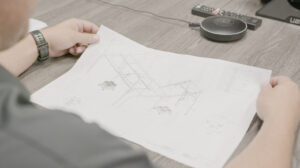Fall Protection Solutions: The Comprehensive Guide
Beyond Basics: Evaluating and Implementing the Ideal Fall Protection Solutions for Your Facility
fall protection solutions should I implement at my facility? Which solutions will work best for our teams and contractors to consistently create a safe work environment? When selecting the best fall protection solutions for your organization we’ll be evaluating and considering these factors:
- Types of fall protection systems and how they fit into OSHA’s hierarchy of controls
- The many options and varieties of fall protection solutions on the market today
- Fall protection services that compliment these solutions
- Where to buy fall protection solutions and additional considerations when purchasing
fall protection solutions available today, a high level best fit for each solution and additional information to help facilitate your decisions for the best results.
Exploring Fall Protection Systems and Their Alignment with OSHA’s Hierarchy of Controls
passive protection, restraint systems, fall arrest, and admin controls.
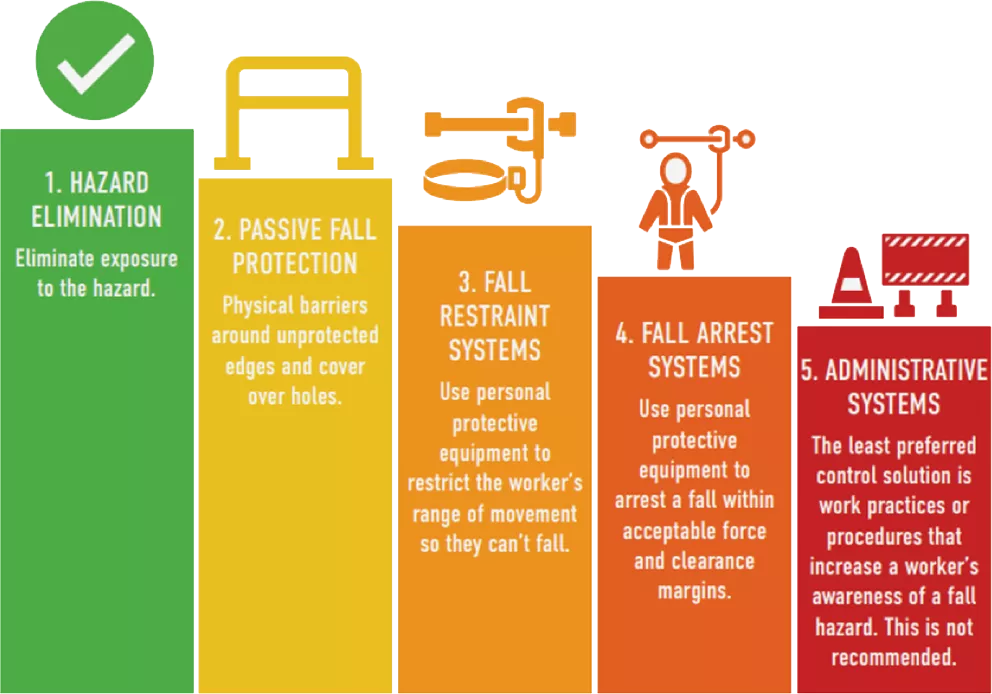
Hazard Elimination
The absolute win of any comprehensive safety strategy starts with eliminating hazards. For fall protection, this could involve designing the work process or the site itself in such a way that working at heights isn’t necessary. This proactive approach effectively removes the risk at its source and sets the tone for an inherently safer work environment. Although this is not feasible in many scenarios, it is OSHA’s favorite and most effective fall protection strategy.
Passive Fall Protection
guardrails, parapet walls, covers, etc. These measures form a physical barrier between your team members and the fall hazard, providing a layer of protection that doesn’t depend on individual actions, making it a robust and reliable line of defense. When hazard elimination is not feasible, this is the next best option.
Restraint Systems
One step further, we enter the realm of fall restraint systems. This active measure involves equipment such as body belts or harnesses tethered to an anchor that prevents your co-workers from reaching the fall hazard. While it requires training and proper usage for your team, this solution works well in situations or at sites where barriers or guardrails cannot be used. This is the midpoint in OSHA’s hierarchy of controls for fall protection.
Fall Arrest Systems
For times when more effective controls are not feasible, fall arrest systems serve as one of the last resorts to save lives. These systems aren’t about preventing the fall, but rather about managing them effectively to minimize injury to your workers. Comprised of components like full-body harnesses, energy-absorbing lanyards, and self-retracting lifelines, these systems work in concert to arrest a fall mid-descent, thereby turning a potentially dangerous fall into a controlled descent and safe stop for recovery.
Administrative Controls
At the tail end of OSHA’s hierarchy, we have administrative controls. This control involves changes in work procedures, like safety training, scheduling work to minimize exposure to fall hazards, and installing warning systems. While these measures don’t directly remove the hazard or limit a fall, they reduce the probability of falls by influencing worker behavior and promoting a safety-conscious work environment. Administrative controls are at the bottom of the hierarchy for a reason and should only be used when all other options have been exhausted as they are the least effective fall protection strategy.
>
Unpacking the Wide Range of Fall Protection Solutions in Today’s Market
Below we’ll provide a high level overview of over two dozen fall protection solutions including where they fall in the hierarchy of controls, pros, cons, and brief description.
Mobile Safety Railing
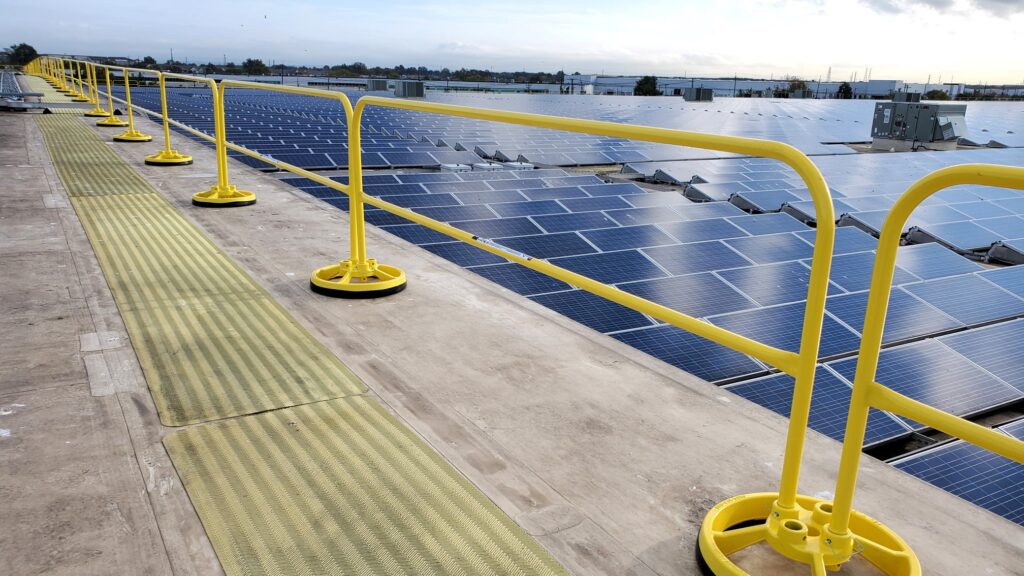
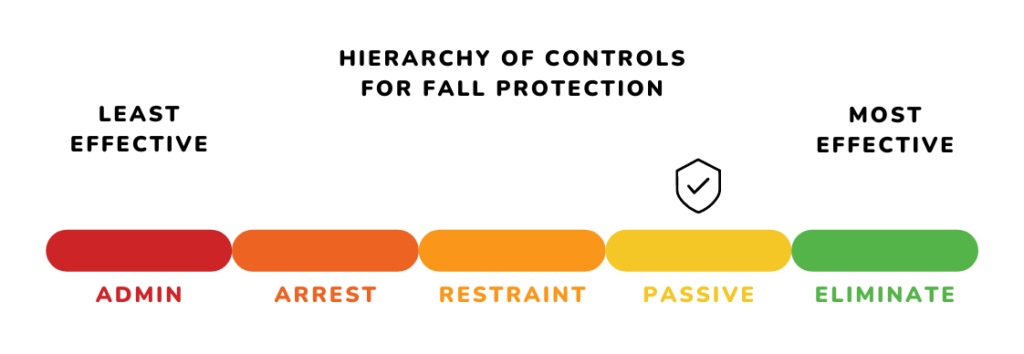
Provides portable and adjustable barriers for changing work areas.
Stability may be less than permanently installed systems.
Provides a portable and adjustable barrier against fall hazards.
Modular Crossover Stairs
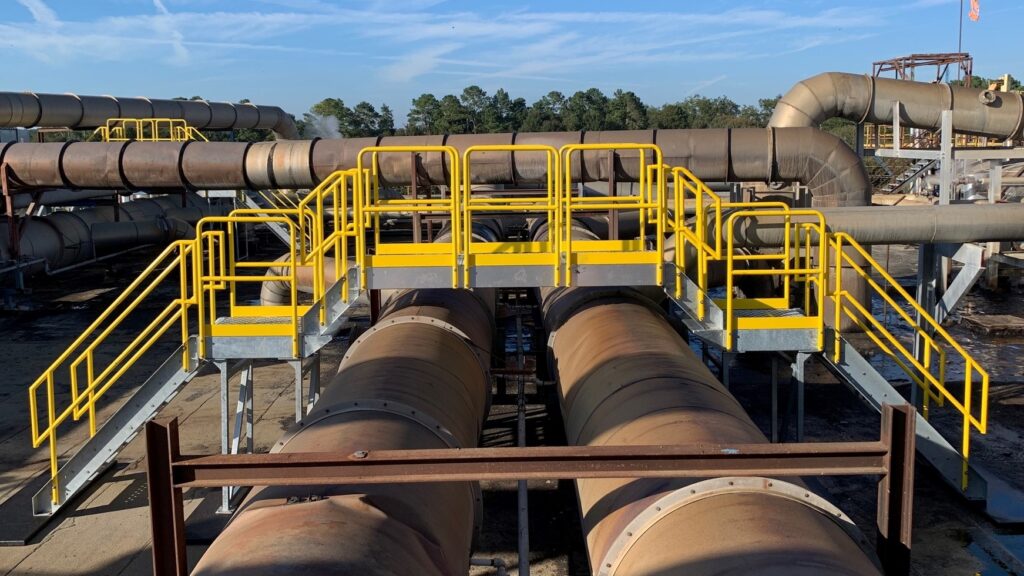
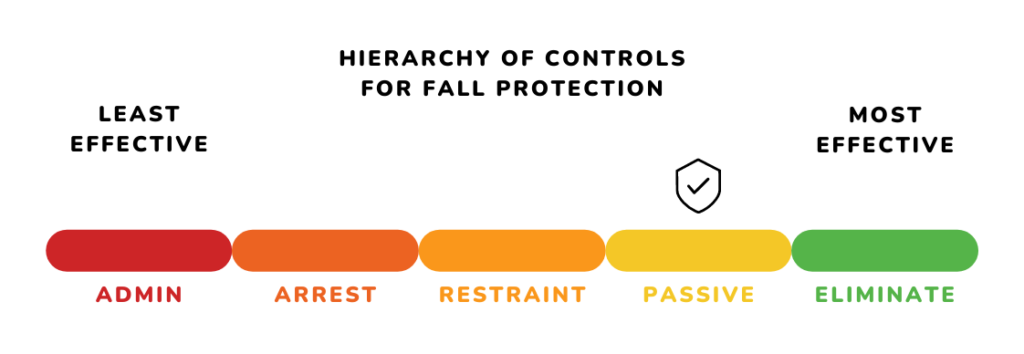
Customizable to specific heights and widths needed.
Larger footprint may require more space than other solutions.
Used to provide safe access over obstructions like pipes or conveyor belts.
Rooftop Hatch Guards
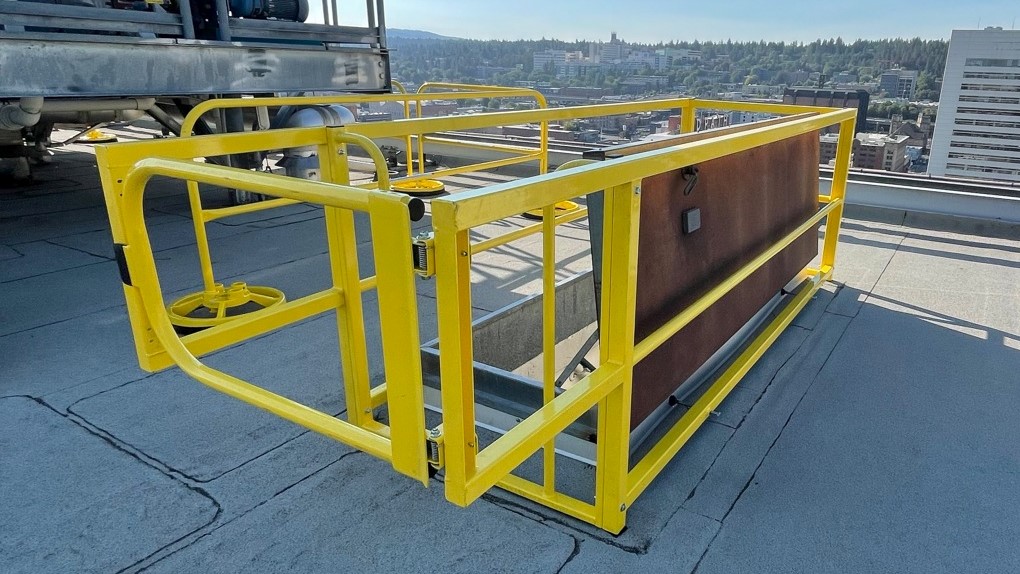

Provides additional security by ensuring the hatch is never unintentionally left open via self closing gate.
May obstruct access if improperly designed or installed.
Installed around rooftop hatches to prevent workers from falling through open hatches.
Self-Closing Gates


Automatically restore the protective barrier after each use.
Requires regular maintenance to ensure the self-closing mechanism functions properly.
Gates that automatically close after use, ensuring a continuous barrier is maintained.
Anchor Points
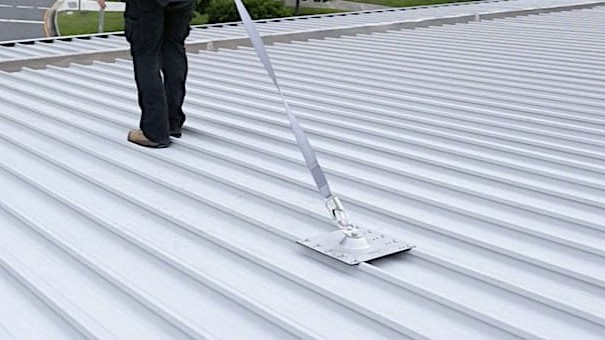
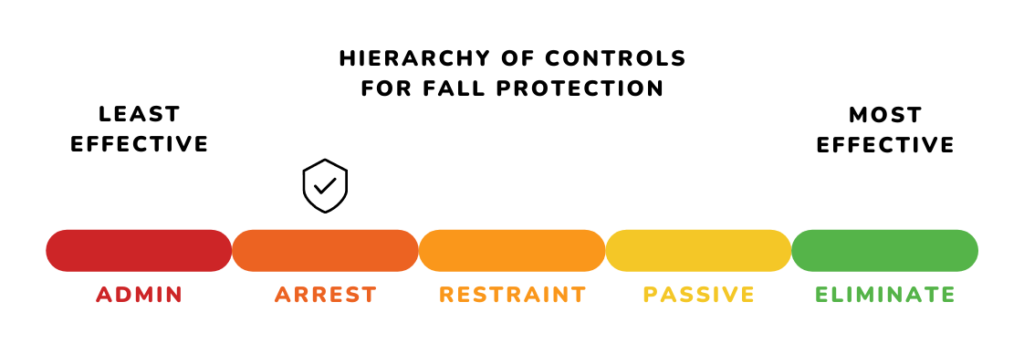
Provides secure attachment for personal fall arrest systems.
Placement and installation need to be precise and load-rated.
Used for attaching lifelines, lanyards or deceleration devices, ensuring a secure point of attachment. Anchor points should have a strength capable of supporting 5,000 lbs per worker attached or be designed and installed as part of a complete personal fall arrest system which maintains a safety factor of at least two.
Architectural Safety Railing
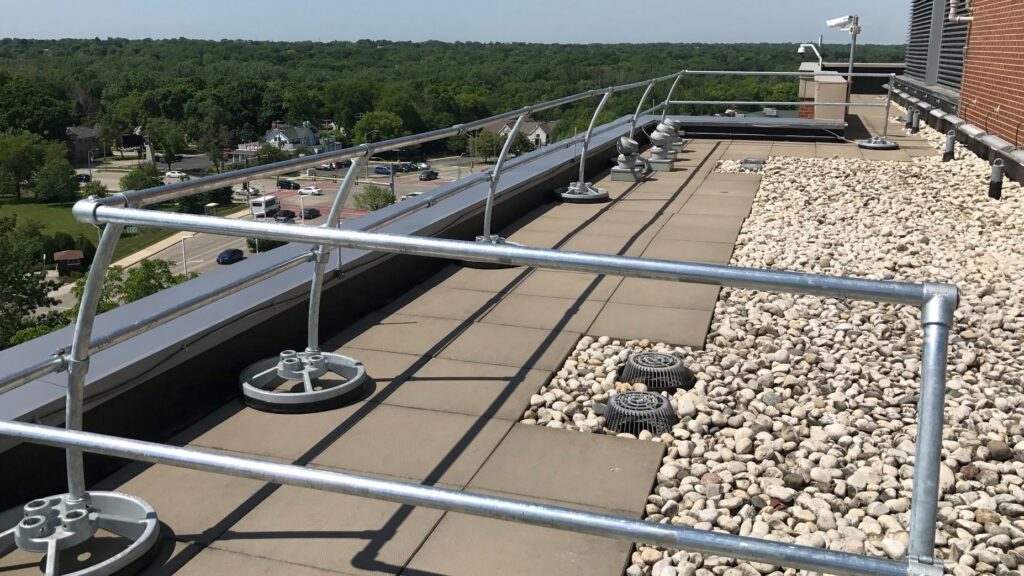

Provides secure attachment for personal fall arrest systems.
Placement and installation need to be precise and load-rated.
Designed to integrate seamlessly with a building’s design, providing a balance of aesthetics and safety.
Cal-OSHA 3209 Safety Railing
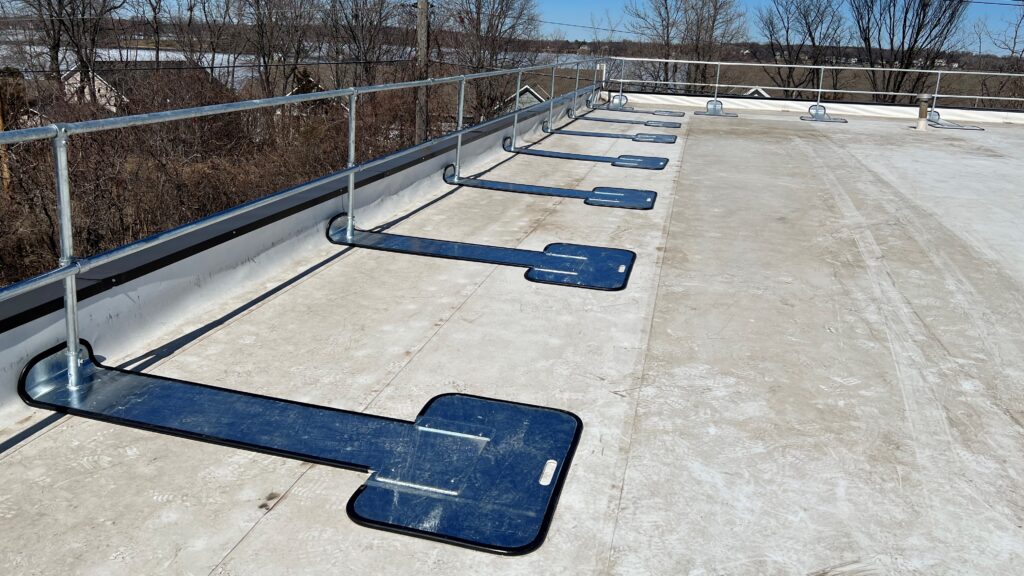

Meets stringent California-specific regulations.
May not be required or applicable outside of California.
Specifically designed to meet the specifications outlined in Cal-OSHA regulation 3209 for preventing falls, which often exceed federal OSHA standards.
Cantilever Dock Gates
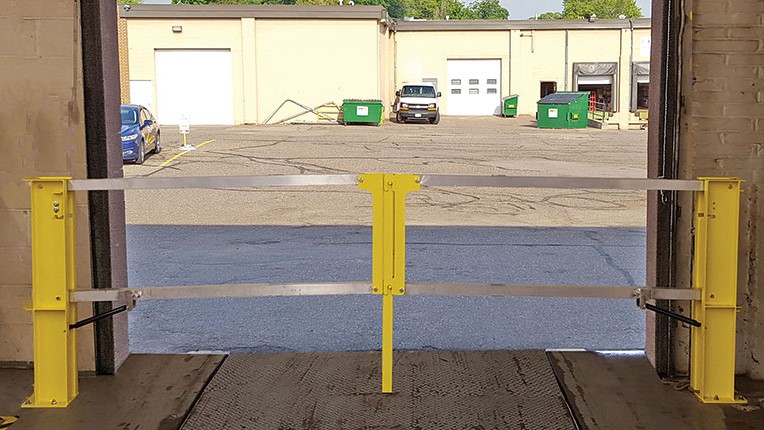

Provides secure attachment for personal fall arrest systems.
Placement and installation need to be precise and load-rated.
These gates are designed to provide full coverage, from the deck to overhead, ensuring comprehensive fall protection at the loading dock.
Drones
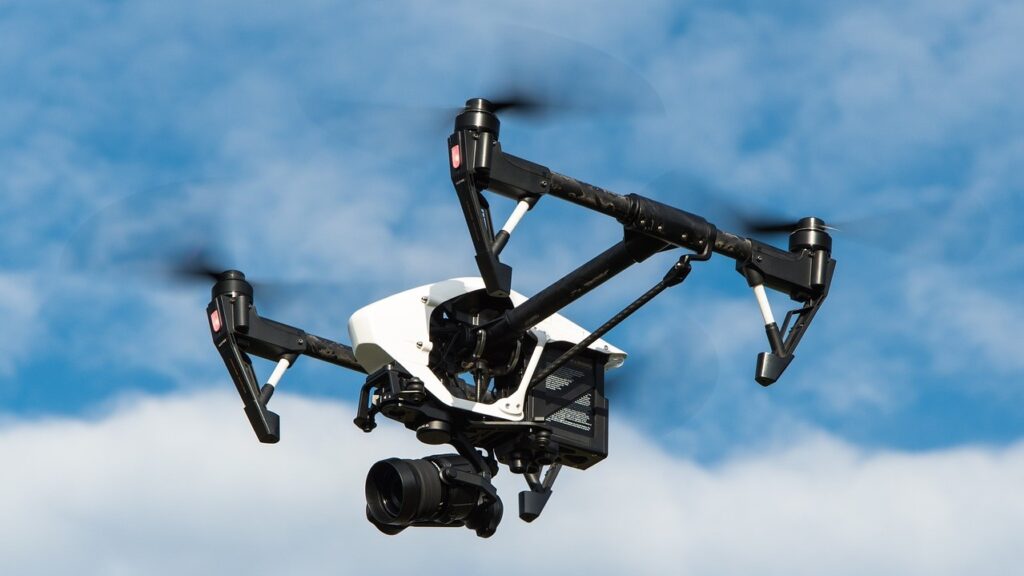
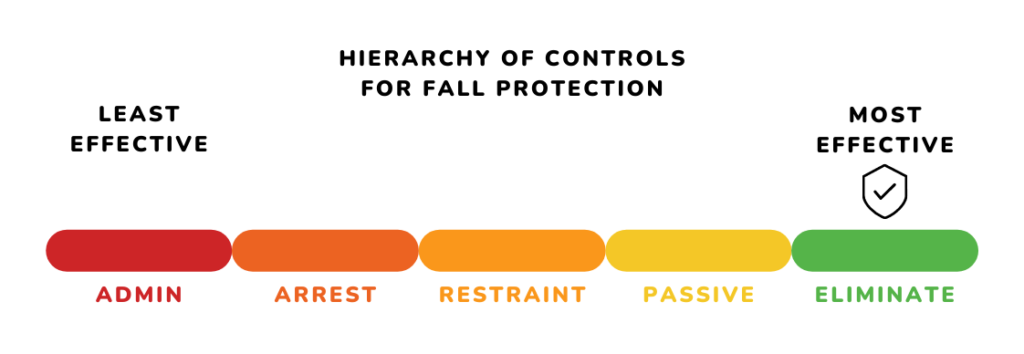
Reduces and/or eliminates exposure to fall hazards.
Requires trained personnel to operate along with FAA rules & regulations and setback distances to airports for use.
Drones can be used to access hard-to-reach areas, reducing the need for workers to be exposed to fall hazards for routine inspections, surveys, infrared imaging, etc.
Enduraline Mobile Warning Line
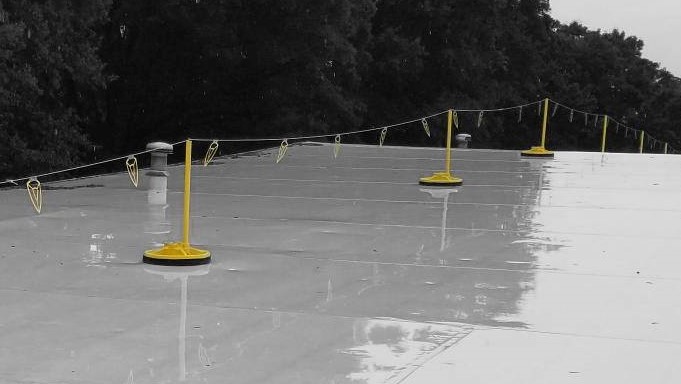
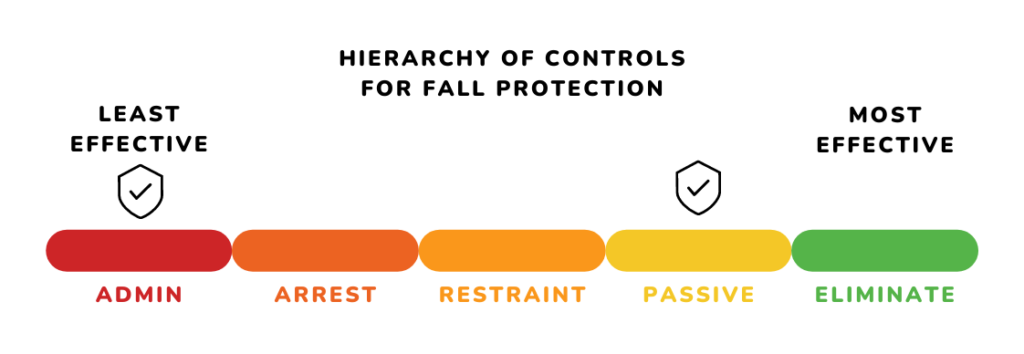
Highly versatile and portable for changing work sites.
Not a physical barrier, so may be less effective if not respected.
Mobile system for creating a visual barrier to keep workers away from fall hazards. Permanent warning line systems are best used in conjunction with guard rail systems. They are also used to strengthen and reinforce administrative control policies.
Enduraline Warning Line For Metal Decks
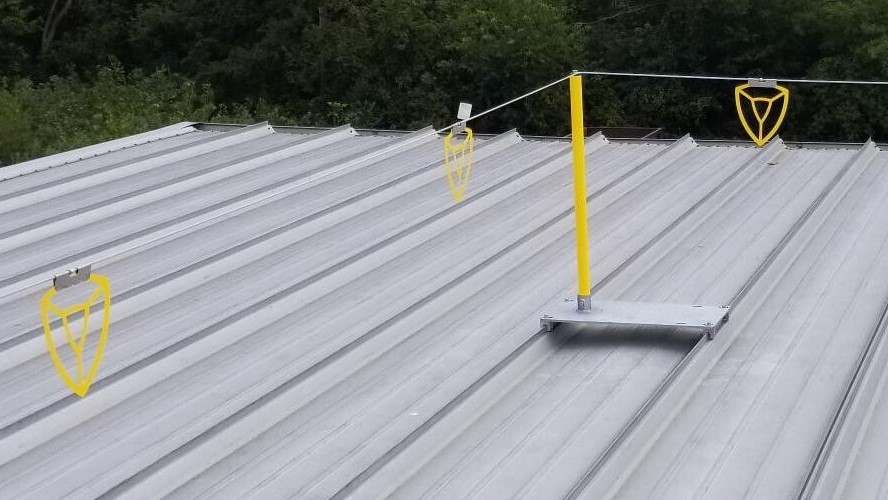

Provides enhanced grip and stability on metal surfaces.
Limited to use on metal decks.
Similar to the mobile version, but designed specifically for metal deck surfaces. Permanent warning line systems are best used in conjunction with guard rail systems. They are also used to strengthen and reinforce administrative control policies.
Fall Protection Carts
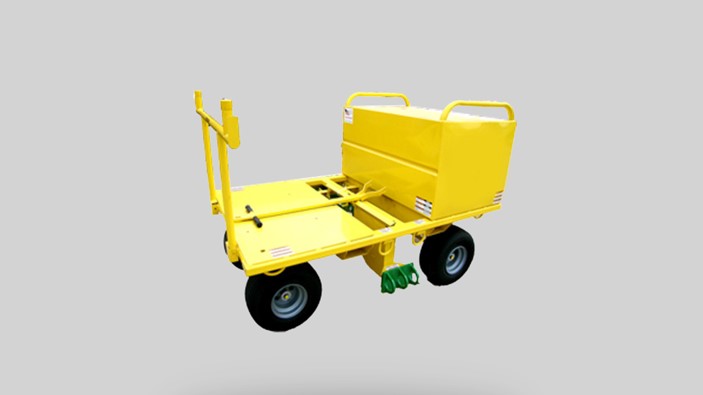

Provides a versatile solution for varying work conditions.
Only works well on wide open roofs. When activated during a fall, many models make a penetration into your roof requiring repairs and waterproofing.
Mobile anchorage systems that can provide fall protection in various locations.
Floor Mount Safety Railing
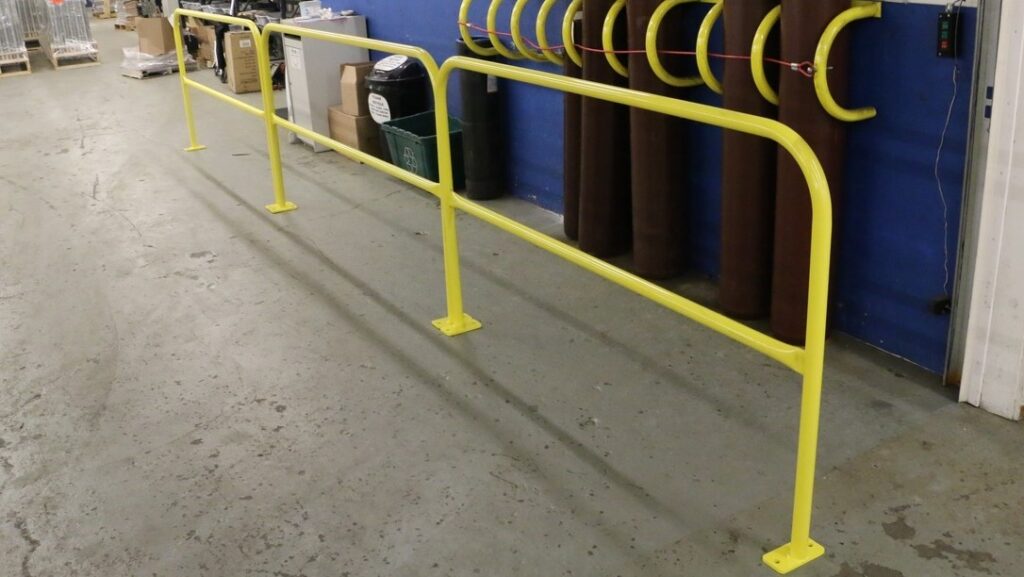

Provides a permanent solution for more static work environments. Many styles also allow for base plate sleeve and rail detachment via pin for floorplan design modifications.
Installation often requires anchoring into concrete and may require structural modifications.
Installed directly onto the floor of a work area to provide a barrier against fall hazards.
Fold Down Safety Railing
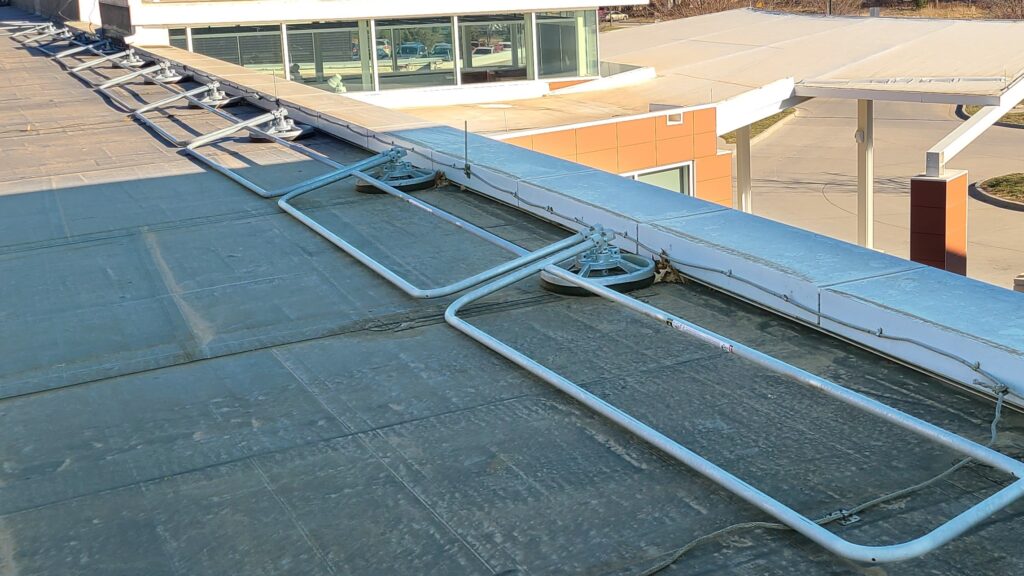

Provides flexibility when railing might obstruct other operations or aesthetics.
Requires manual operation to fold down and raise up.
Provides passive fall protection around perimeters but can be folded down when not in use.
Horizontal Lifelines (HLLs)
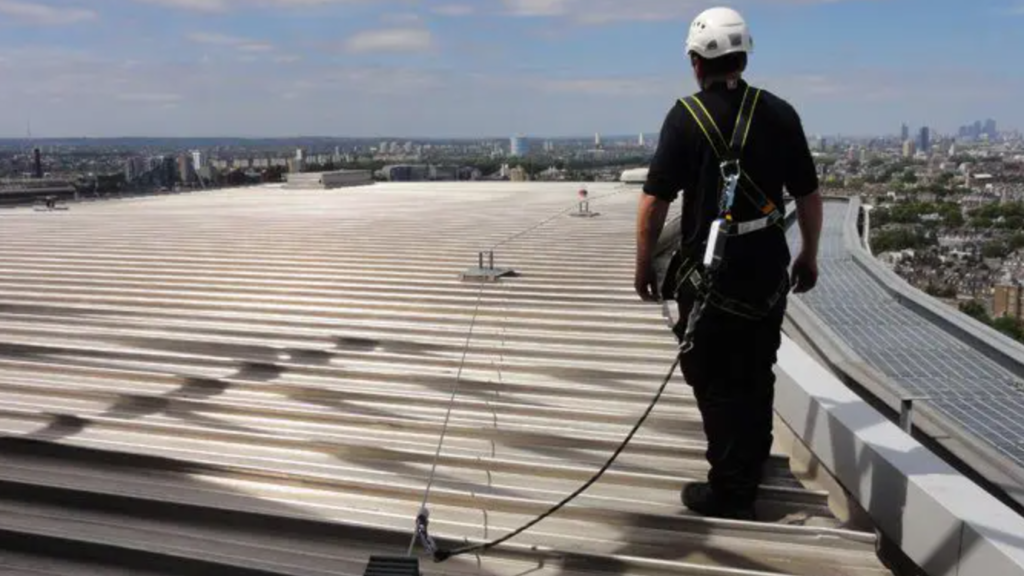
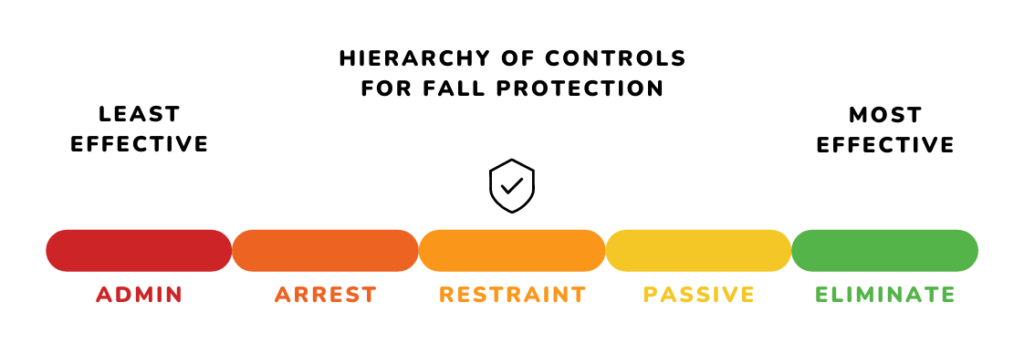
Can provide protection for multiple workers simultaneously.
Lines can get tangled. Requires precise calculation and installation to ensure safety.
Systems that allow workers to move horizontally while remaining tied off to a secure line.
Ladder Guards
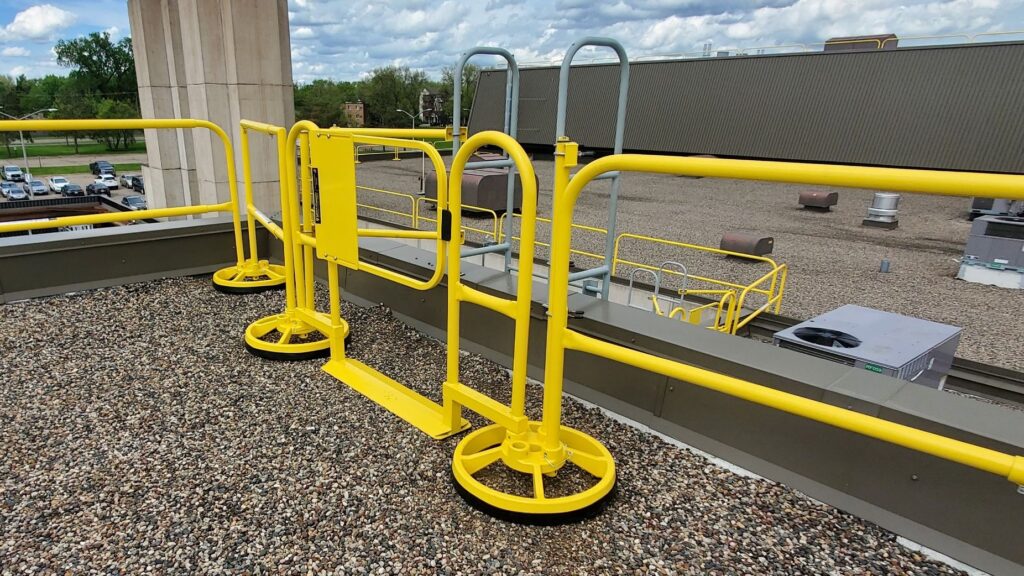

Provides continuous safety barriers at ladder which is a higher risk area.
May not be feasible for all roof types and dimensions.
Top of ladders safety system for controlled access and transition onto flat roofs.
Mezzanine Safety Gates
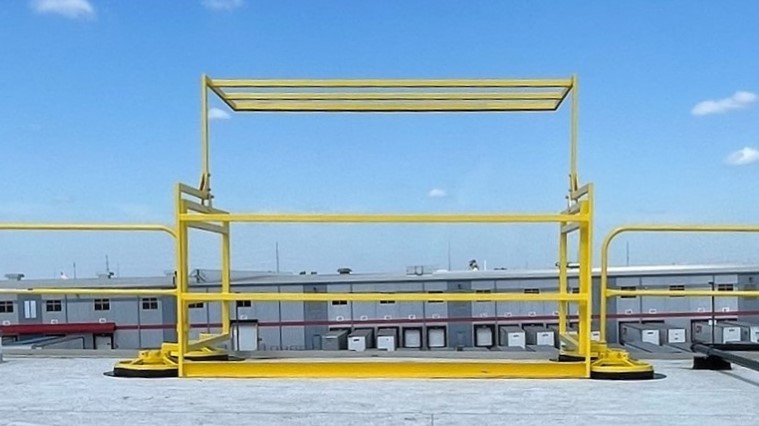

Designed to always keep one side closed for continuous protection.
Requires proper operation by workers to maintain effectiveness.
Protects workers from falls on mezzanine edges while loading and unloading goods.
Metal Deck Safety Railing
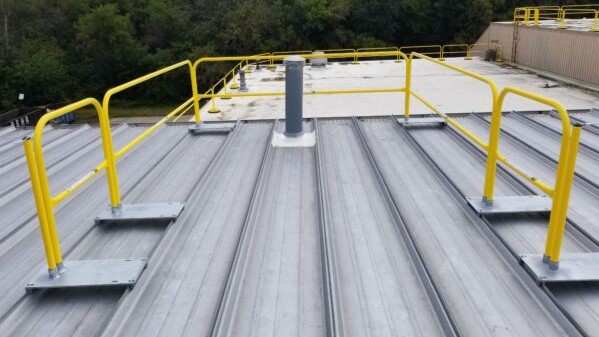

Non-penetrating solution that doesn’t compromise the metal deck.
May not custom transitional rails provided for a comprehensive solution if the work area isn’t solely on metal decks.
Designed to provide roof fall protection on metal deck surfaces usually via standing seam clamps.
Wall/Pit Safety Railing
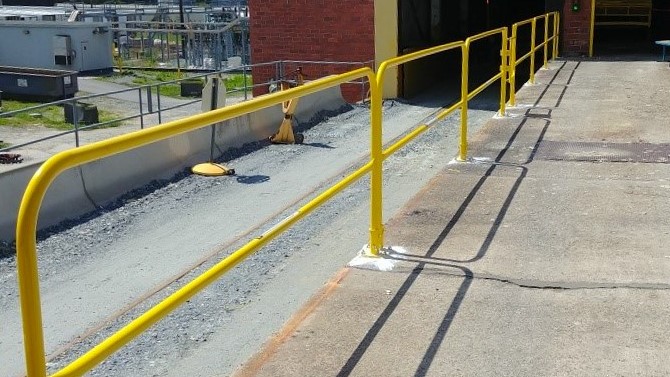

Provide a robust physical barrier to protect workers from fall hazards.
Installation may require modification of the existing structure.
Typically installed around the perimeters of pits, walls or floor openings to prevent falls. These railings provide a physical barrier to protect workers from fall hazards.
Parapet Wall Safety Railing
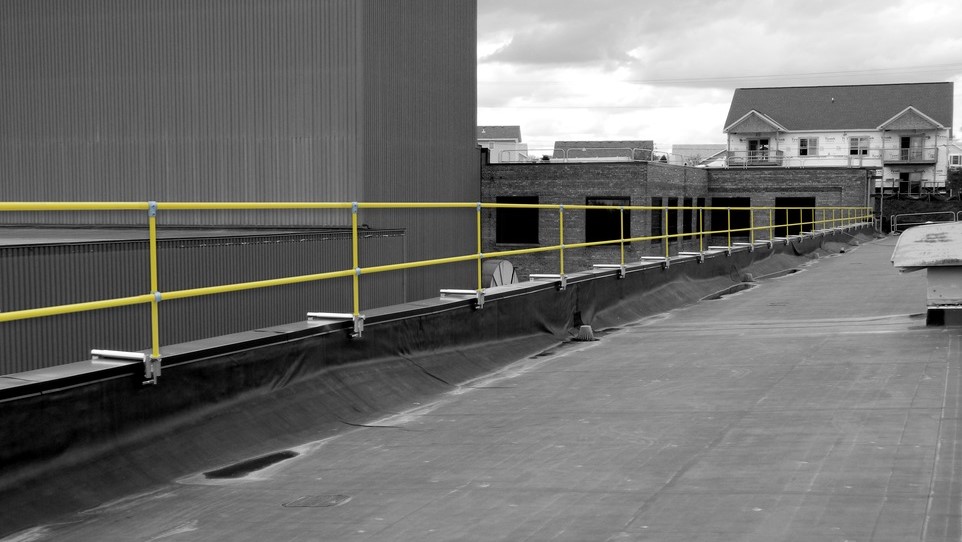

Non-penetrating design prevents water intrusion and preserves the structure of the parapet wall.
May not be suitable for parapet walls of certain heights or cap designs.
Installed on low height parapet walls to provide a protective barrier against falls.
Personnel Fall Safety Netting
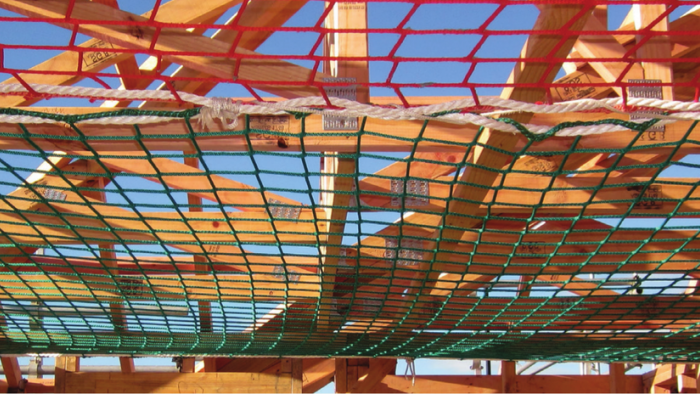
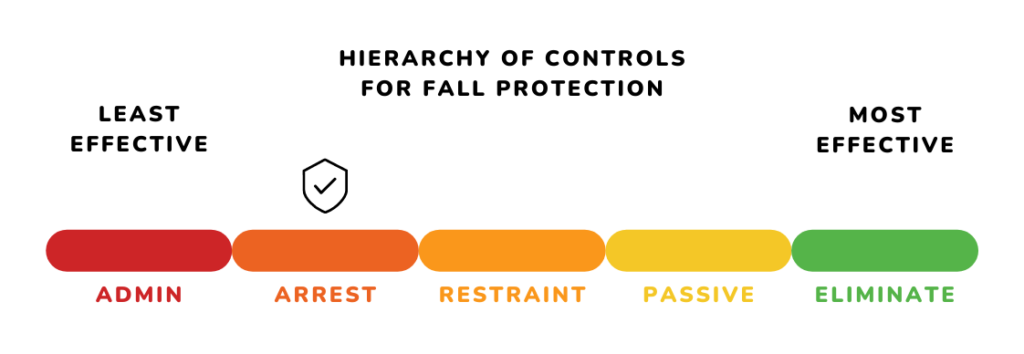
Provides an additional layer of protection when used in conjunction with other fall protection systems.
Can be difficult to install in some situations.
Installed under high work areas to catch falling workers and reduce fall distances.
Rigid Rail Systems
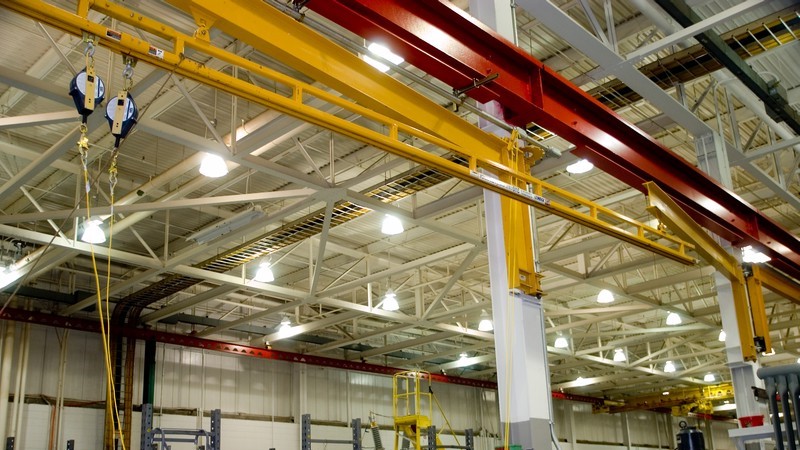

Allows for smoother horizontal movement and can reduce fall distances.
Requires professional installation and regular inspections.
Allows workers to move vertically and horizontally while tied off, offering fall protection and easier rescue capabilities.
Self-Retracting Lifelines (SRLs)
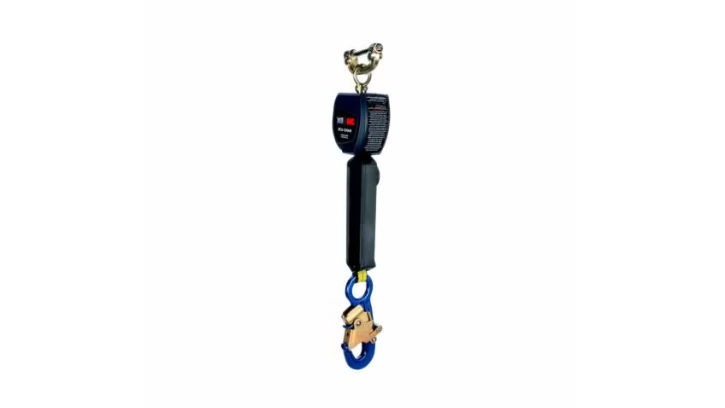

Reduce fall distances and resulting forces exerted on a worker during a fall which reduces injury severity.
Can be costly and require regular inspection and maintenance.
Connects the user’s fall protection harness to an anchor point, locking instantly in the event of a fall to minimize fall distance.
Skylight Guards
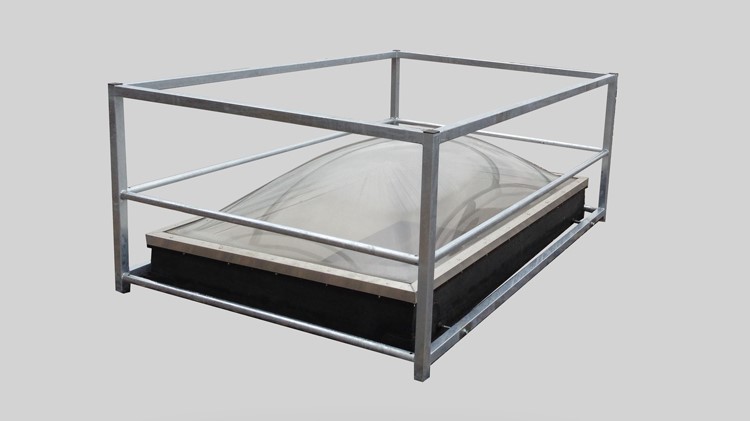

Provide more substantial protection and acts as a visual reminder of potential fall hazard.
If not using compression fit, Installation may require modification of the skylight or roof structure.
Installed around skylights and sometimes overhead to prevent workers from falling through the skylight.
Skylight Screens
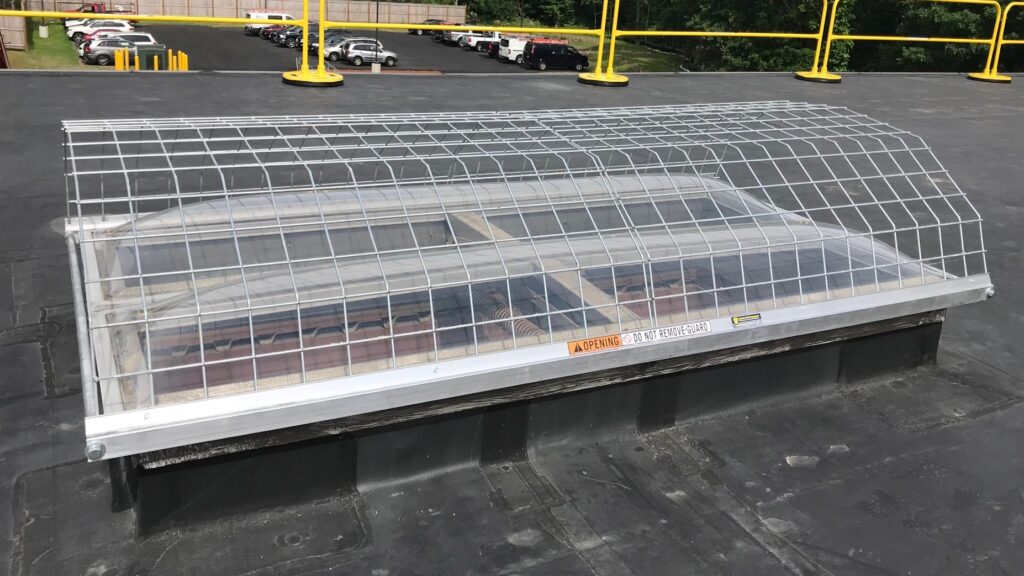

Protects both workers from falls and the skylight from damage.
May reduce natural light entering through the skylight.
Screens installed over skylights to prevent falls through often brittle or fragile skylight material.
Tethering Fall Protection for Tools
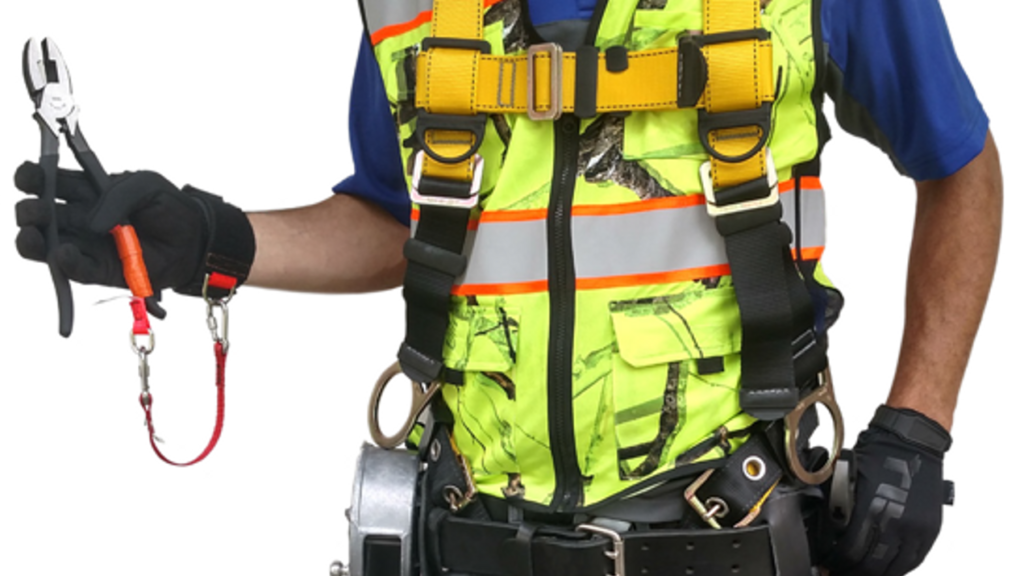

Prevents dropped tools, increasing safety and productivity.
Requires workers to adjust to the tethering system and may interfere with work.
While our primary focus is preventing people from falling, preventing tools from falling is a close second as they can be fatal projectiles to workers below.
Telescopic Tools
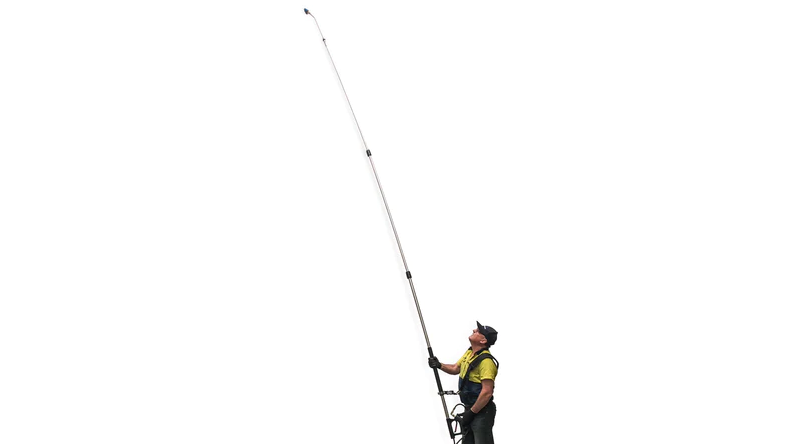

Allows for work from a safe distance or height, reducing worker fatigue and increasing efficiency.
Not suitable for all types of work. Tasks such as window washing, solar panel cleaning, lighting replacement, inspection feasible with lighter tools.
These tools extend the reach of workers, allowing them to perform tasks at height from a safe, grounded location, thus eliminating most/all fall hazards.
Vertical Lifelines
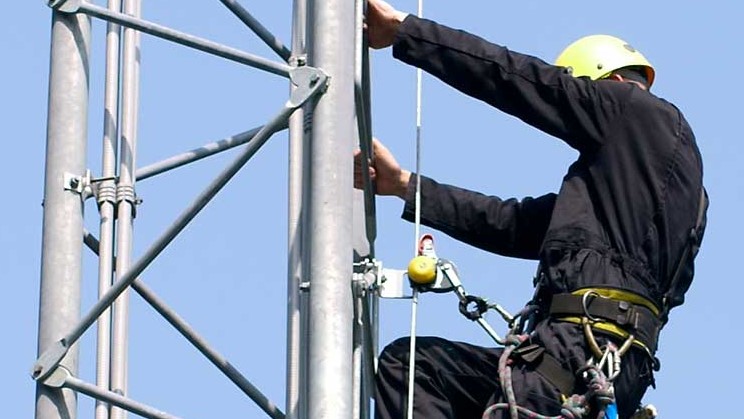

Provide secure protection for workers needing to ascend or descend vertically. Very helpful in tower maintenance.
Can limit the worker’s horizontal movement and requires careful setup and training to ensure safety.
Utilized when workers need to ascend or descend vertically, these systems provide a secure line that workers can tie off to, ensuring safety while moving vertically.
>
Fall Protection Services that Compliment Safety Solutions
Next, we’ll be discussing a few fall protection services to consider from the solutions above: hazard assessment, where we identify potential risks; engineering/modeling, involving the creation of effective safety designs; and installation, where we apply these designs to enhance your safety setup.
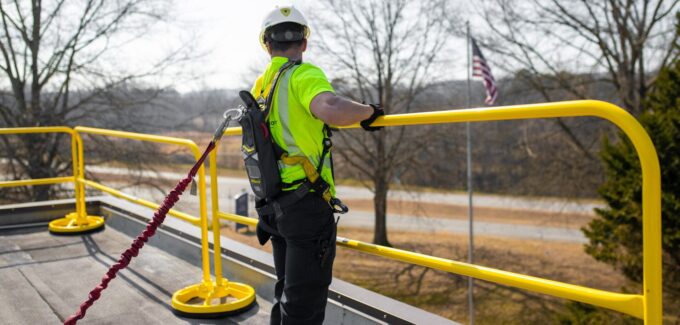
Hazard Assessments
hazard assessments in line with OSHA guidelines. This service is pivotal in identifying fall hazards, elements in the worksite that could cause a fall. Additionally, we develop fall control strategies, deploying safety equipment and training to mitigate the risk of falls. Our hazard assessment process entails a thorough identification of risks, using pre-existing data, conducting on-site inspections, investigating past incidents, and anticipating hazards in unusual circumstances. Once identified, we prioritize and execute corrective actions to mitigate these hazards.
Engineering & Modeling
Our engineering and modeling services are executed by highly skilled engineers, backed by industry-leading software like SolidWorks, to create safety designs tailored to your site’s unique needs. The engineering process involves meticulously modeling potential fall hazards and developing effective countermeasures. Leveraging advanced 3D design capabilities, we create precise, realistic models of your worksite to ensure our safety solutions seamlessly integrate with your existing infrastructure.
Installation
installations. Their safety training, expertise, and familiarity with various projects ensure competent handling, regardless of size or location. We stay transparent by providing full documentation of the process, allowing clients to feel secure, knowing their installations are managed by insured and responsible professionals.
>
Key Considerations When Selecting a Fall Protection Solutions Provider
Compliance Standards: Ensure that the products meet or exceed all relevant regulatory safety standards like OSHA, ANSI, and any industry-specific requirements. This is non-negotiable, especially for larger companies with high visibility.
Scalability of Solutions: Consider if the supplier can handle the scale of your operations, from single-site installations to nationwide, multi-location projects.
Customization: Does the manufacturer provide custom solutions? Many companies have unique needs that off-the-shelf products might not address.
Expert Consultation & Support: The supplier needs to be a partner who provides expert consultation on the best safety solutions for your company’s unique needs.
Training Programs: The manufacturer should offer comprehensive training programs on the proper usage and maintenance of the safety equipment, suitable for the size and needs of your staff..
Reliability and Durability of Products: High-quality, durable equipment is crucial to protect your workforce and reduce the risk of work stoppages due to equipment failure.
Established Track Record: The provider should have a solid reputation for serving small to large-scale operations. Consider their history with Fortune 500 companies.
Product Innovation: Look for suppliers that lead in technological advancements and innovation, offering the latest in fall protection solutions.
Insurance and Liability Coverage: Ensure that the supplier carries adequate insurance, particularly liability coverage in case of equipment malfunction or safety issues.
Post-Purchase Support and Services: A top-tier manufacturer will offer excellent after-sales service, including regular maintenance, inspections, and quick response for any emergencies or issues.
 >
>
Fall Protection Equipment & Solutions Wrap Up
Choosing the right fall protection solutions is vital for worker safety. Take into account OSHA’s hierarchy of controls, the various fall protection systems, and additional services like hazard assessments, modeling, and installation in your vetting process. Look for a manufacturer that meets compliance standards, can scale, offers customization and has a record of product reliability. Insurance coverage and post-purchase support are also very important.
Informed decisions lead to safer workplaces and a workforce that can confidently return home safe each night.
please reach out to our fall protection experts, we’d be happy to help.
Thank you for reading and stay safe!
Guard Rail: Exploring the Significance, Regulations and Installation Process for a Secure Work Environment
Introduction to Guard Rails
When it comes to establishing safety in the workplace, guard rails are an indispensable tool. Whether it’s a construction site, manufacturing facility, or any occupation involving work at heights, guardrails serve as protective barriers designed to prevent falls and create a secure working environment. In this article, we will delve into the world of guardrail systems, exploring their significance, materials used, regulatory requirements and the installation process. All of this information is aimed at creating a safer work environment for your employees.
What is a Guard Rail?
A guard rail, also known as a safety rail, is a protective barrier or railing system designed to prevent falls and create a secure working environment. A guardrail system generally consists of 4 components: a top rail, mid rail, post and a secure base. Guard railing is commonly used to create a physical barrier between workers and any potential fall hazards. These hazards include edges of elevated platforms, roofs, stairways, or other elevated areas. They are typically made of durable materials and are installed along the exposed sides or edges of a platform or structure.
Guardrails are required by safety regulations and standards in many countries. In the United States, workplace safety regulations are primarily overseen and enforced by the Occupational Safety and Health Administration (OSHA). Regulations help to ensure the protection of workers from falls and to minimize the risk of accidents and injuries. If an employer fails to provide adequate fall protection they could risk citations or fines. We will touch more on safety regulations later in the blog.
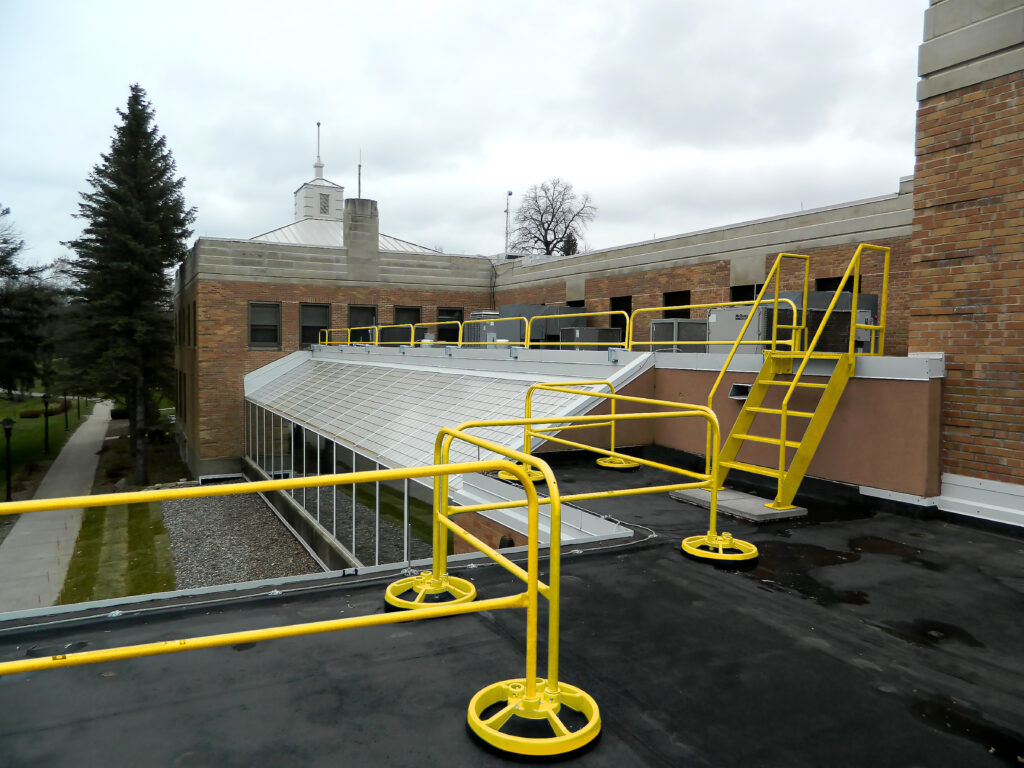
What are Guard Rails Made From?
Guardrails are typically made of durable materials that can withstand different environmental conditions and provide effective protection. The choice of material depends on factors such as the application, budget, weather patterns and specific safety regulations. Here are some common materials used:
Steel: Steel is a popular choice for guardrails due to its strength, durability and resistance to impact. They are frequently used in industrial settings and construction sites due to their ability to withstand heavy loads and harsh weather conditions. Steel guardrails are often galvanized or powder coated to enhance their corrosion resistance and prolong their lifespan.
Aluminum: Aluminum guardrail is lightweight, corrosion-resistant, and easy to install. It is commonly used in both indoor and outdoor settings, such as commercial buildings and rooftops. However, aluminum rails are typically more expensive in material costs and are more prone to bending/denting under significant impact.
Composite Materials: Composite guard rails are made from a combination of materials, such as plastic fibers and wood particles. They offer a balance between durability, aesthetics and low maintenance. Composite guardrails are often used in outdoor settings, such as decks, balconies or waterfront areas. This kind of railing is also used in applications where metal cannot be used as it may disrupt scientific equipment.
It’s important to note that local building codes, industry standards or specific project requirements may also influence the material selection for safety rails. It’s advisable to consult relevant regulations and standards specific to your location and industry to verify compliance with all applicable requirements.
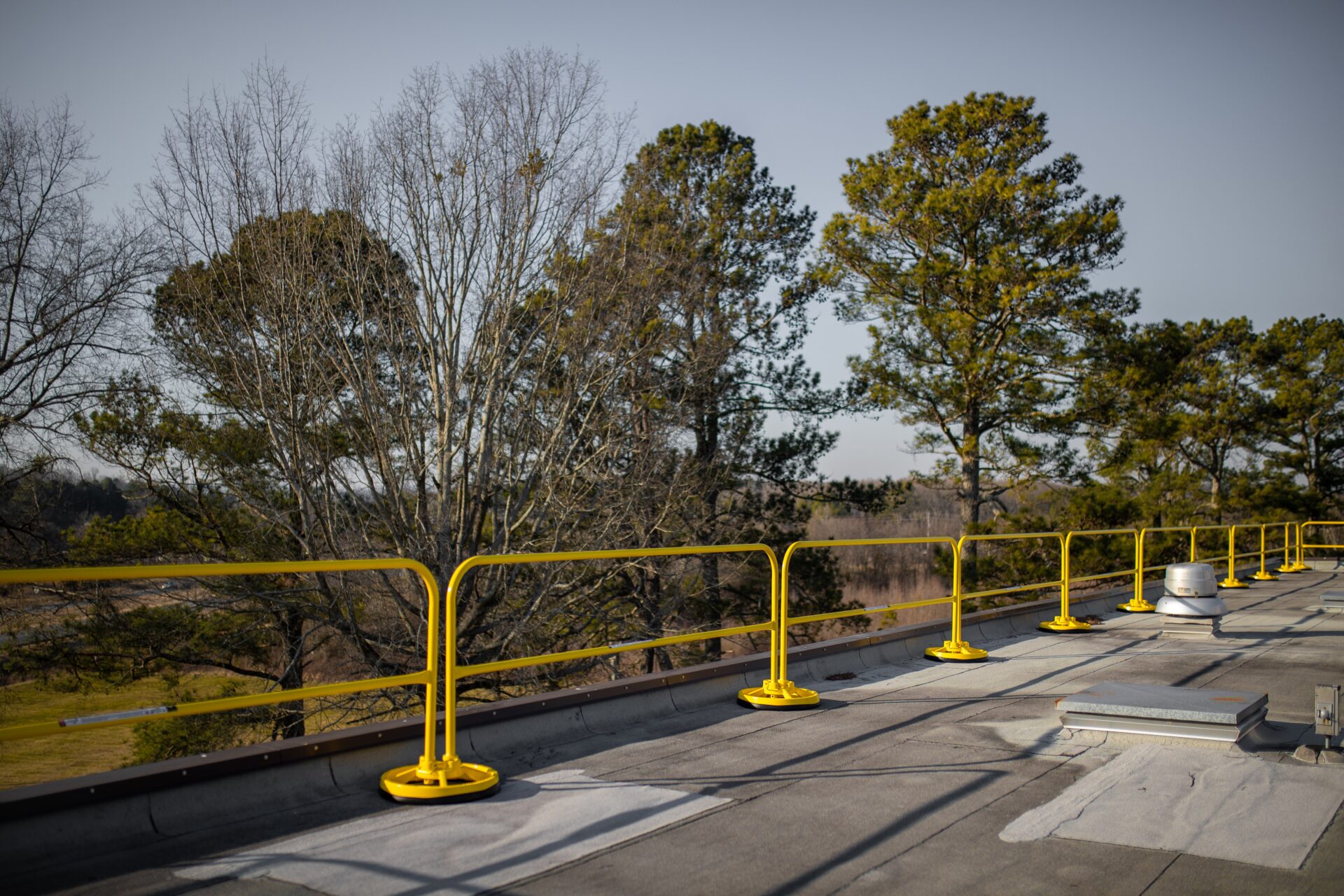
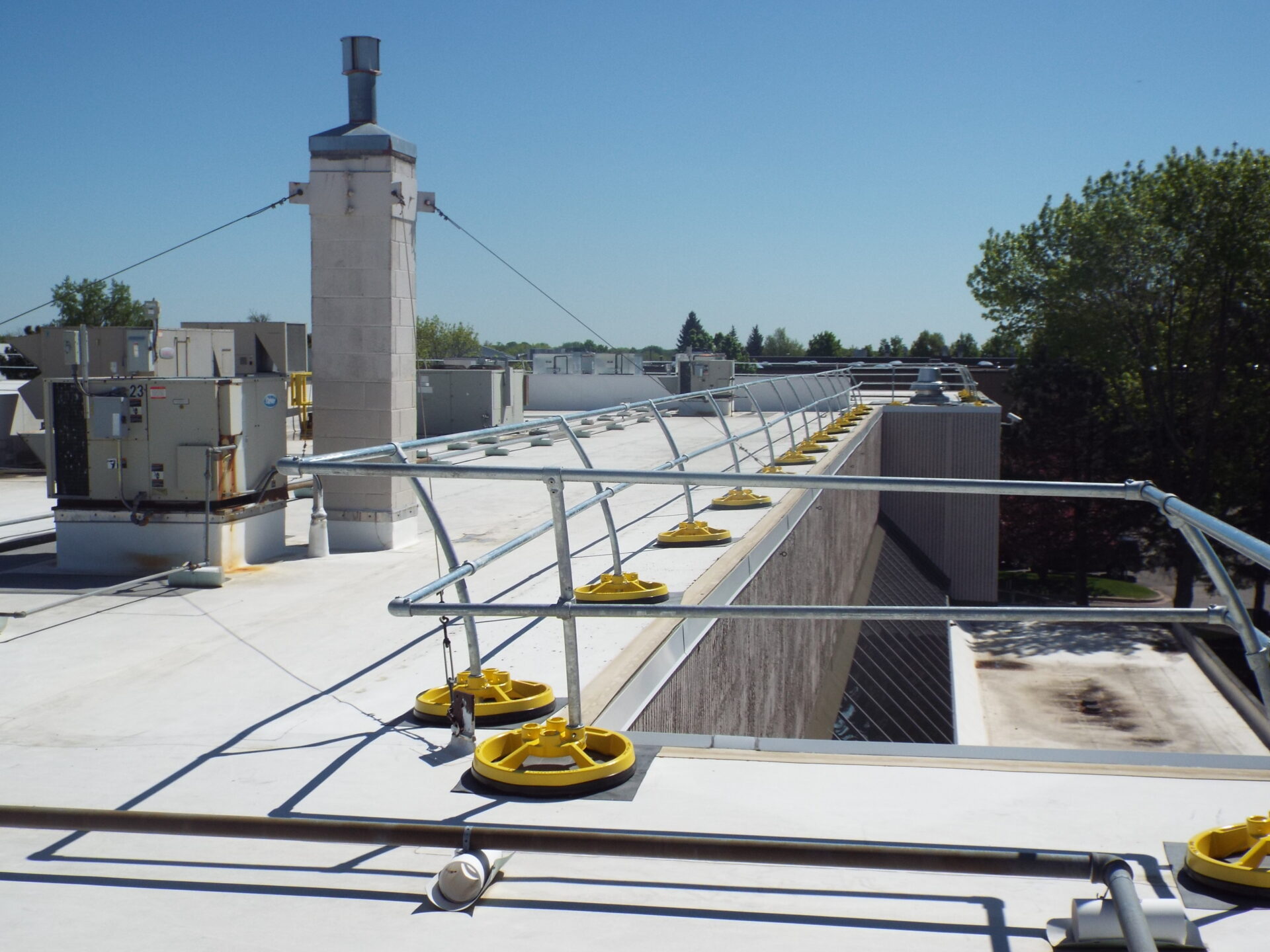
Assess the Work Area:
- Evaluate the work area and identify the locations where guardrails are necessary, such as elevated platforms, roofs, stairs, or other areas with fall hazards.
- Factors such as the location, traffic patterns, environmental conditions and intended purpose of the guard rail are considered during this assessment.
Planning and Design:
- Once the site assessment is complete, the next step is to plan and design the safety system. This involves creating a detailed layout that specifies the dimensions, placement and configuration of the guard rails.
- The design should comply with relevant safety standards, codes, and regulations to secure optimal protection. The planning stage may also include considering additional safety features. This could include reflectors or warning signs, depending on the specific requirements of the site.
Install the Guardrails:
- Mark the locations for the guardrail bases, ensuring they are spaced at appropriate intervals to provide adequate support and stability. Spacing for longer runs is usually 10 feet to maximize safety and reducing cost.
- Once your anchored or weighted bases are positioned, you can then begin to add the safety rail, including top and mid rail sections.
- Depending on application, a toe board may need to be installed at the base of the guard rail system. This will help prevent objects or debris from falling off the edge onto machines or workers below.
Inspect and Test:
- Inspect the entire system to confirm that all components are properly installed, secure and free from defects.
- Conduct tests to verify the stability and strength of the guardrail system, validating it can withstand the required forces and loads.
Provide Access Points:
- Where necessary, install access points such as gates or openings in the guardrail system, equipped with self-closing mechanisms. These should provide safe access to the work area when required.

Train Workers:
- Provide training to workers on the proper use, limitations, and inspection of the guardrail system.
- Emphasize the importance of not tampering with or modifying the safety system without proper authorization.
It’s crucial to remember that these steps provide a general guideline for what an install entails. Specific requirements may vary depending on industry regulations, local codes and the unique characteristics of the work environment. To streamline this process and guarantee optimal results, it is recommended to enlist the help of the professionals who prioritize safety and compliance with industry standards.
Check out the video below for an example of Safety Rail Company’s proven process – from start to finish.
[Video embed removed]
Why Should You Choose a Guard Rail System for Your Roof Safety Plan?
Passive Protection:
Safety rails provide passive protection, meaning they act as a physical barrier between workers and potential fall hazards. Once installed, they offer continuous protection without requiring active engagement or additional equipment, such as harnesses or lanyards. This passive nature enforces constant protection and reduces the risk of human error or failure to use personal fall protection equipment properly.
Enhanced Stability:
Safety rails are securely installed and weighted/anchored, providing stability and resistance against movement or displacement. They are designed to withstand anticipated loads and forces, ensuring reliable protection for workers on the roof. A great option is a weighted mobile safety base. These bases allow for simple installation with no drilling or building roof penetration necessary. The weight of these bases alone allow for added safety. This stability is especially crucial in high-wind or adverse weather conditions, where guardrails offer a more secure safety solution compared to temporary measures like warning lines.
Accessibility and Convenience:
Guardrails create a designated safety zone around the roof edges, making it easily identifiable for workers. The presence of rails eliminates the need for workers to constantly assess their proximity to the edge or adjust their position, allowing them to focus more on the task at hand. This accessibility and convenience contribute to a safer and more productive work environment.
Collective Protection:
Guard railing provides collective protection, meaning it safeguards multiple workers simultaneously. Unlike personal fall protection systems that are individualized, guard rails offer protection for anyone within the guarded area. This aspect is particularly advantageous when multiple workers are present on the roof or when there is frequent movement or interaction near the roof edges.
Visual Deterrent:
Safety rails serve as a visible deterrent, reminding workers of the potential fall hazard and encouraging them to maintain a safe distance from the roof edge. The highly visible presence of the rails help create a culture of security and promotes compliance with safety guidelines.
Compliance with Regulations:
As mentioned earlier, guardrails are often required by safety regulations and standards, such as those set by OSHA, CAL OSHA or International Building Code (IBC). By installing safety rails, employers demonstrate their commitment to meeting legal requirements and assuring the safety and well-being of their workers.
It’s significant to note that while guard rails offer key advantages for roof safety, they should be properly designed, installed and maintained according to applicable regulations and industry standards. Regular inspections and maintenance are essential to confirm the ongoing effectiveness of the guard rail as a safety measure on roofs or any other elevated work areas.
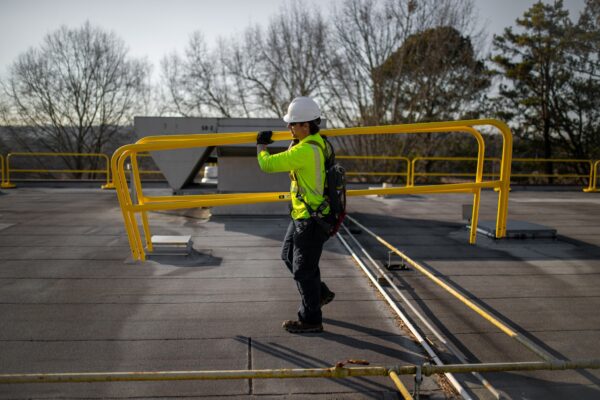
Final Thoughts
Guard rails play a vital role in safeguarding workers against falls and potential accidents when working at heights or around hazards. By understanding the purpose, requirements, materials and benefits associated with guard rails, employers and workers can establish a safer work environment that complies with OSHA regulations. When employers choose guard rails for rooftop safety, they demonstrate their unwavering commitment to providing a secure workplace and protecting the well-being of their valuable workforce, minimizing unnecessary risks and potential harm. If you have any questions or would like to hear more about guard railing, please reach out to our safety experts today!
Thank you for reading and stay safe!
Fall Protection Plan: Navigating Through Workplace Safety with the Experts at Safety Rail Company
When it comes to initiating a fall protection plan, nobody is better equipped to assist you from beginning to end than the experienced team at SRC
Fall Protection Planning
The fall protection industry is a tricky world to navigate, particularly for a safety manager or facility coordinator with no experience in rooftop safety or creating a fall protection plan.
Firstly, there are a seemingly endless number of product choices and safety strategies. The initial question you must ask yourself is: Do I want an active or passive fall-protection system? An active strategy involves employees interacting with the equipment each and every time work must be done on the roof. Examples of this includes fall-arrest and fall-restraint systems, complete with harnesses and lifelines.
On its surface, this may seem like a quick and easy way to guarantee your workers’ safety; and there’s no doubt that active fall-protection systems save lives. However, it’s also true that this strategy is the most prone to user error or negligence. Simply instituting a personal protective equipment (PPE) procedure does not guarantee that your workers will follow it each and every time maintenance is performed on the roof. Unfortunately, one oversight could be the difference between life and death.
Furthermore, according to OSHA’s hierarchy of controls, fall-restraint and fall-arrest systems rank lower than passive fall protection systems, such as guardrails. Why? Guardrails protect all workers, all the time, with no engagement required from the user.
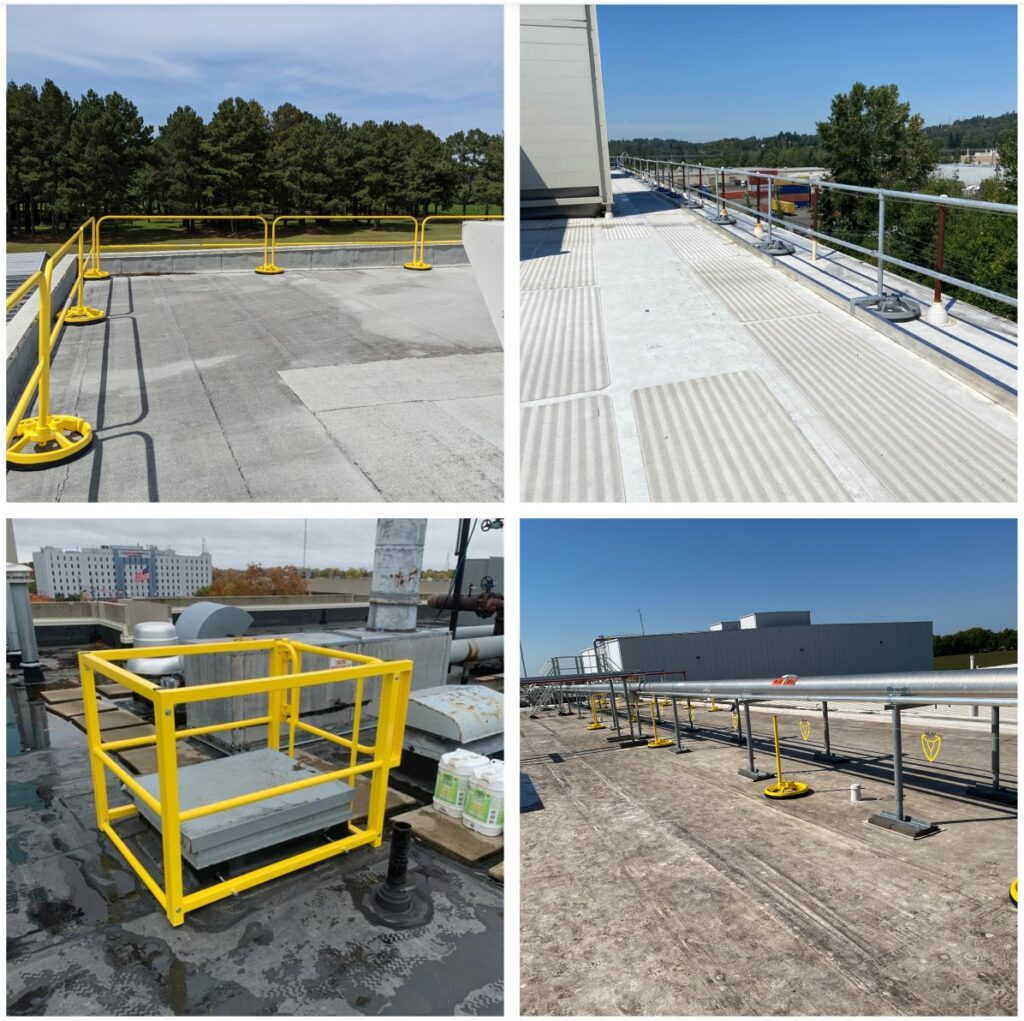
Making Your Facility Safe and Compliant
So, you’ve chosen a fall protection safety plan. Now what? Deciding on a passive fall protection system is just the first step; determining which products are right for your facility can be a tricky process. How do you know what you need?
This is where Safety Rail Company separates itself from the competition with our comprehensive customer service and vast industry experience.
Simply put, SRC serves as a partner to our clients from the beginning of the process to the final on-site installation – helping every step of the way. Our sales and engineering staff, after discussing your facility’s needs and conducting a review of the building, craft a site-specific safety system just for you. Our product lineup provides the versatility required to ensure safety and compliance in any environment. We then build our products ourselves, right here in America – and our on-staff team of installation professionals complete the job, removing the stressful unknown of what you’re going to do with products once you receive them.
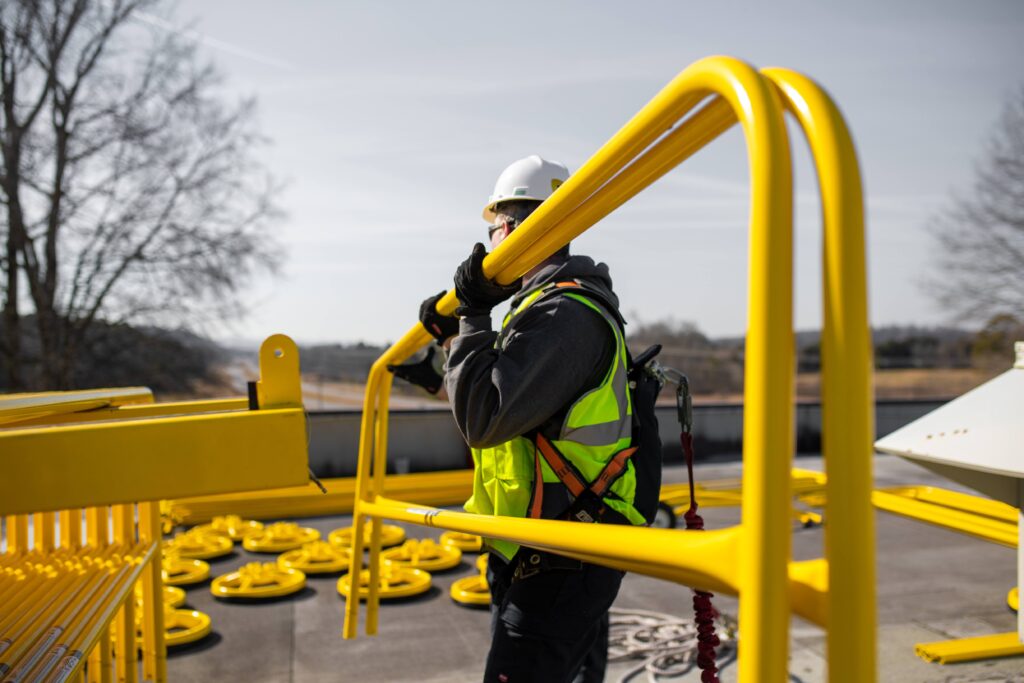
Industry Experience
Safety Rail Company is the most experienced supplier in the market. With over a decade of first-hand knowledge in fall protection, and being the preferred partner of numerous Fortune 500 companies, there’s nothing SRC hasn’t seen.
Each facility rooftop is a little different – from the size and grade to elevation and equipment challenges, each building presents its own unique obstacles. Luckily, SRC has experience in just about every industry including:
- Education
- Government
- Industrial
- Food-Processing
- Warehouses
- Data Centers
With glowing reviews from companies such as Tyson, Amazon, Microsoft, Perdue, GE, Cargill, and Disney; we have proven ourselves as a reliable, customer-first company, capable of crafting safety plans for any facility type.
Safety Rail Company is also proficient in a number of procurement portals, including ISN, Avetta, ComplyWorks, and others.
Compliance Experts
Finally, when it comes to ensuring compliance, Safety Rail Company prides itself on being an expert – not only in OSHA standards, but also an regional variances.
In California, for instance, local Cal-OSHA regulations are more stringent than their federal counterparts. Because of the stricter regulations, SRC is leading the way in delivering regionally compliant products with our Cal 3209 Safety Rail system.
In short, there’s nothing that Safety Rail Company doesn’t know about the fall protection industry – and nothing we won’t do to ensure our clients receive the best service and the best safety system for their facility.
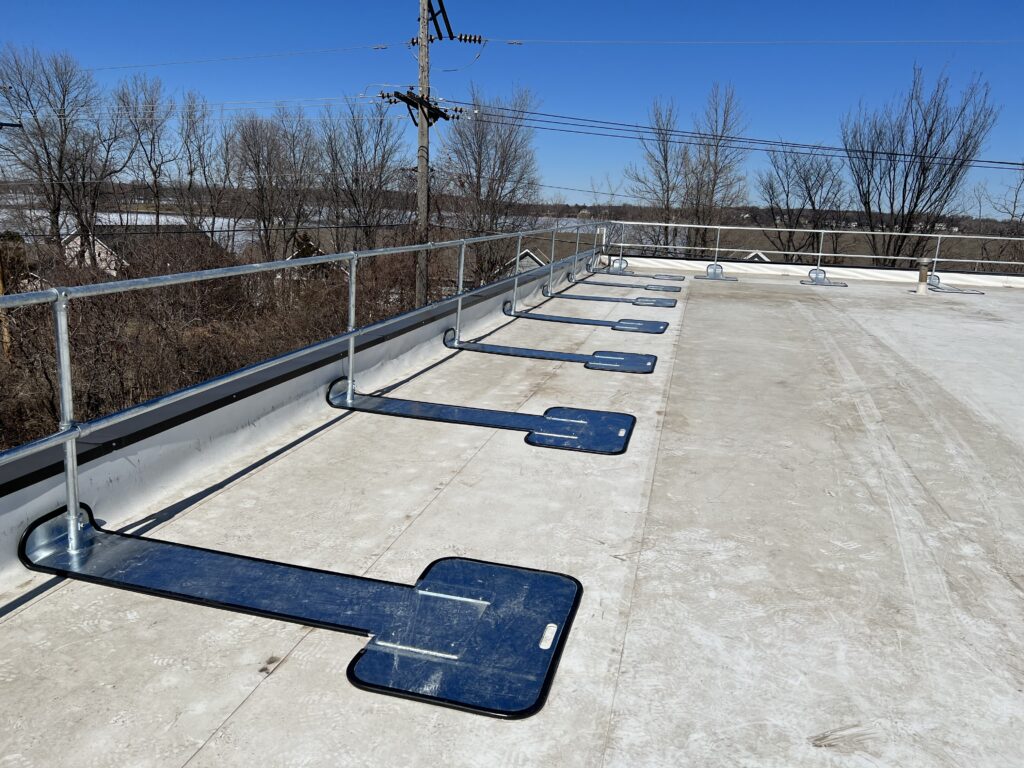
























 >
>
